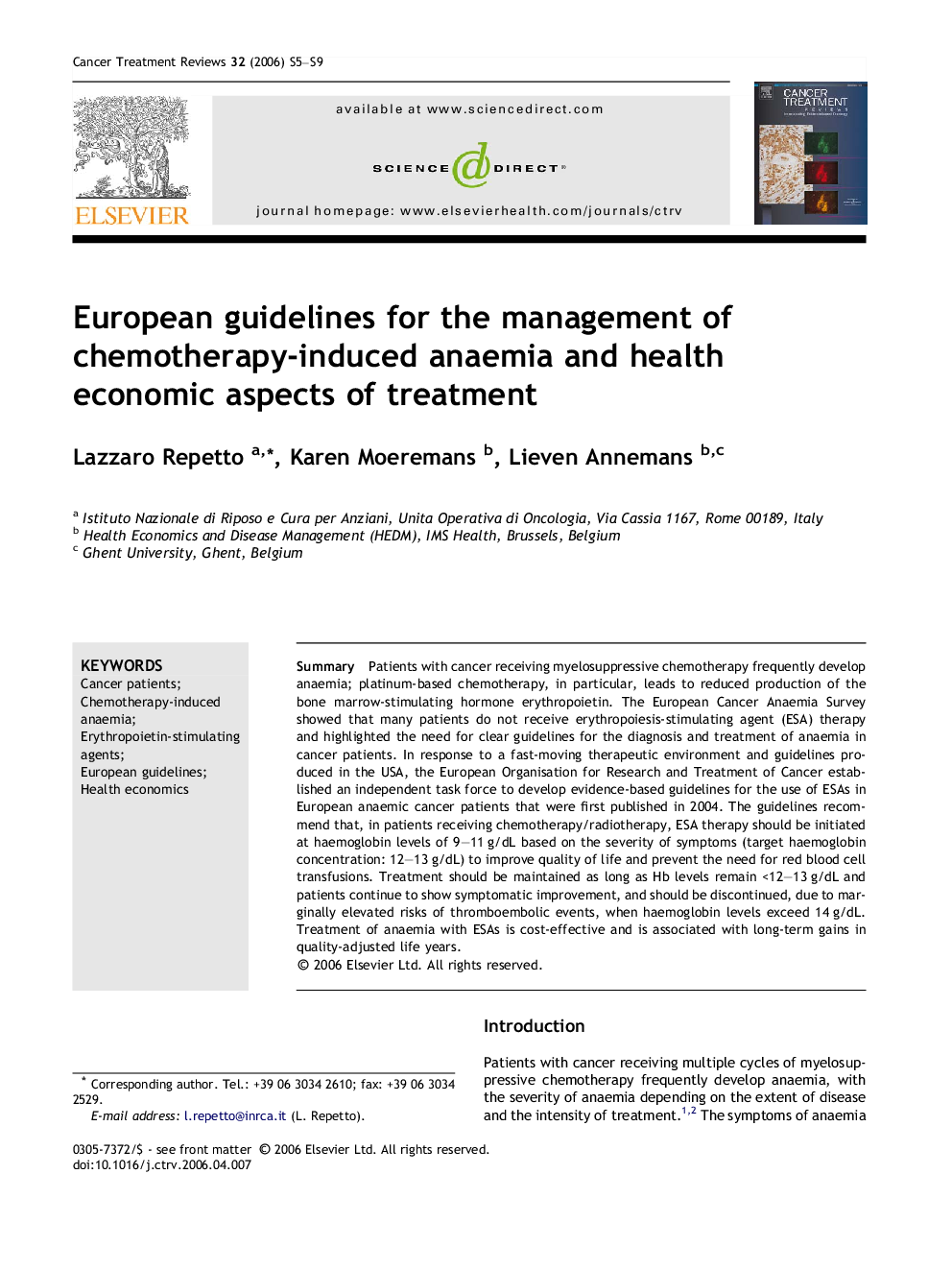| Article ID | Journal | Published Year | Pages | File Type |
|---|---|---|---|---|
| 3980850 | Cancer Treatment Reviews | 2006 | 5 Pages |
SummaryPatients with cancer receiving myelosuppressive chemotherapy frequently develop anaemia; platinum-based chemotherapy, in particular, leads to reduced production of the bone marrow-stimulating hormone erythropoietin. The European Cancer Anaemia Survey showed that many patients do not receive erythropoiesis-stimulating agent (ESA) therapy and highlighted the need for clear guidelines for the diagnosis and treatment of anaemia in cancer patients. In response to a fast-moving therapeutic environment and guidelines produced in the USA, the European Organisation for Research and Treatment of Cancer established an independent task force to develop evidence-based guidelines for the use of ESAs in European anaemic cancer patients that were first published in 2004. The guidelines recommend that, in patients receiving chemotherapy/radiotherapy, ESA therapy should be initiated at haemoglobin levels of 9–11 g/dL based on the severity of symptoms (target haemoglobin concentration: 12–13 g/dL) to improve quality of life and prevent the need for red blood cell transfusions. Treatment should be maintained as long as Hb levels remain <12–13 g/dL and patients continue to show symptomatic improvement, and should be discontinued, due to marginally elevated risks of thromboembolic events, when haemoglobin levels exceed 14 g/dL. Treatment of anaemia with ESAs is cost-effective and is associated with long-term gains in quality-adjusted life years.
